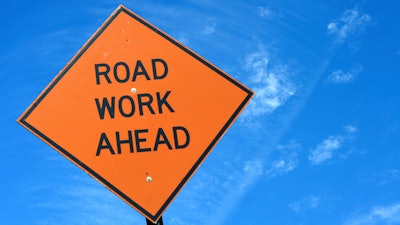
Anchored by a 10-year, $5.3-billion transportation bill, Oregon, for the foreseeable future, is the nation’s hottest state for road construction, according to The Insider’s Guide to the State DOT Market for AEC Firms 2018-2021, a market intelligence report recently published by Zweig Group.
Oregon isn’t alone. Neighboring Washington, Colorado, Texas and Florida round out Zweig Group’s list of states where AEC firms stand a great chance of tapping into the billions in projects listed on state and local road construction schedules. On the other hand, five Midwestern states — Indiana, Kansas, Michigan, North Dakota and Wisconsin — face declines and uncertainties over revenue and, therefore, have a less favorable outlook.
The Insider’s Guide covers everything from vehicle miles traveled to state gas taxes, from key DOT contacts to overall trends in delivery and funding like design-build and public-private partnerships. Conceived as a go-to compilation for all firms looking to work in the bridge-and-road industry, the publication takes an exhaustive look at what’s happening in transportation at the local, state and federal levels.
“Our new DOT book, at over 400 pages, is a gold mine of information for AEC firms either already working in or looking to enter the arena of road and bridge design,” said Chad Clinehens, Zweig Group’s president and CEO. “While this book is being offered in a traditional print format, it’s also being offered digitally so that the information can reach as many people as possible. We’re proud of this publication because we know it will help firms succeed in a competitive market. It's the ultimate business developer's guide to increasing DOT market share.”
In addition to in-depth analysis of the market outlook for professional services firms seeking work with DOTs around the country, The Insider’s Guide also explores how national issues are impacting local markets. For example, frustration over the federal government’s unwillingness or inability to raise the federal gas tax — which has stood steady at 18.4 cents per gallon since 1993 and has lost about 40% of its purchasing power over that 25-year timeline — has motivated many states across the country to take matters into their own hands by raising gas taxes.
The Case for State-Level Infrastructure Funding & Financing
Enter Oregon. After much debate and a few compromises, Oregon passed its landmark transportation bill last year. The Keep Oregon Moving bill includes measures to raise gas taxes and auto registration fees. It also taxes new car and bicycle sales and allows tolls in the Portland area. The bill includes funding sustainability measures that other states may seek to copy in the future.
The department will move from outsourcing about 30% of its project work to consultants, as it has been doing in recent years, to some 70% under the Keep Oregon Moving program, opening up lots of work for AEC firms.
“Going from 30% to 70% is a major change for us,” Fowler said. “We’re going to get our arms around this new program and focus on successfully completing projects so we can get more money.”
As detailed as the assessment of Oregon is, the same can be said of the other 49 states and Washington, D.C. If you want to know what’s going on in the DOT industry, The Insider’s Guideis a great place to start.

















